#silesaurid
Explore tagged Tumblr posts
Text
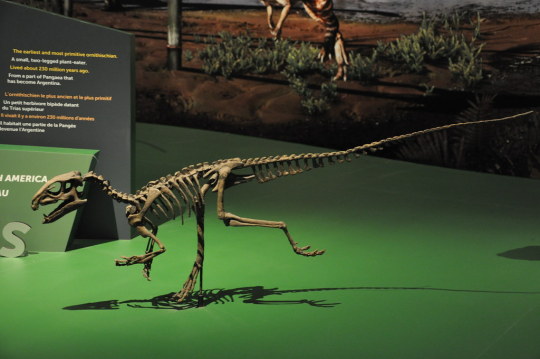

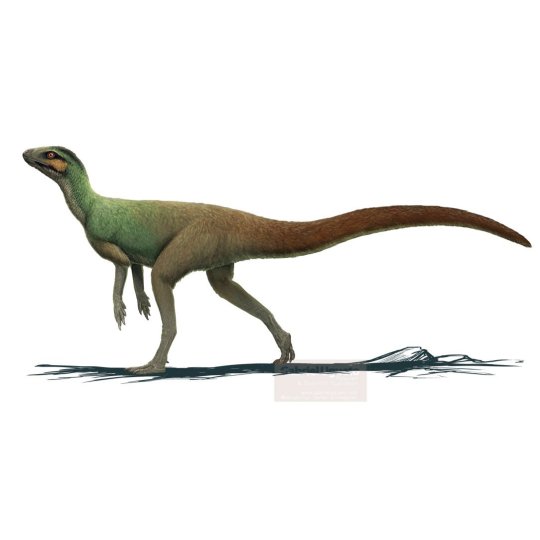
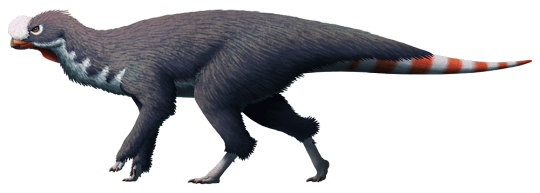
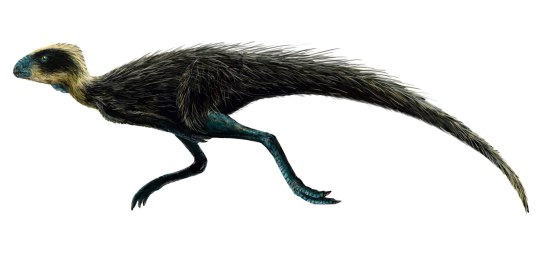
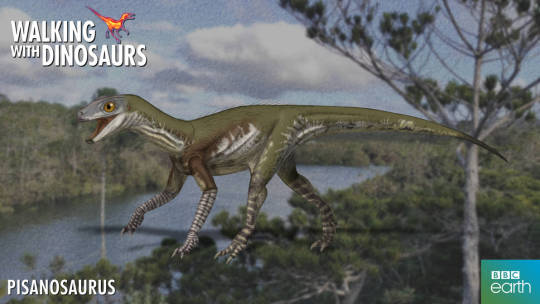
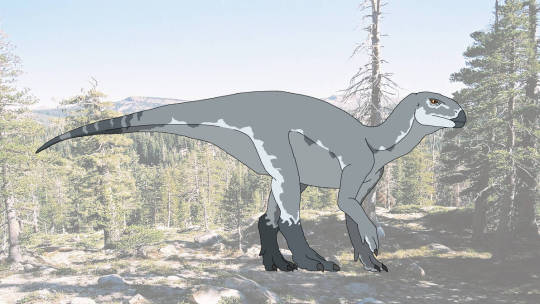
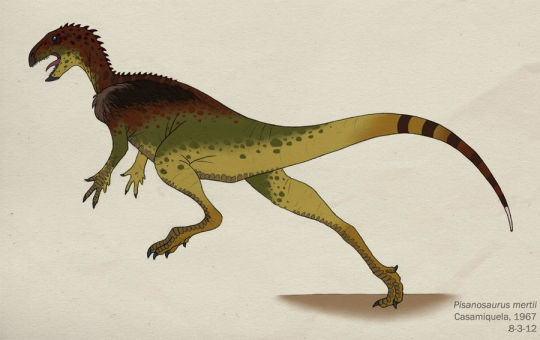
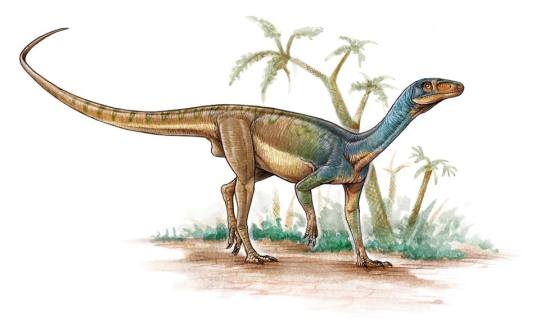
Pisanosaurus is an extinct genus of early dinosauriform reptile which lived throughout what is now South America during the Carnian stage of the Triassic period some 231 to 227 mya. The first and only known specimen of Pisanosaurus consisting of a single partial skeleton was unearth in 1962 by Galileo Juan Scaglia at the Hoyada del Cerro Las Lajas locality in the Ischigualasto Formation of La Rioja Province, Argentina. It was later described by Argentine paleontologist Rodolfo Casamiquela in 1967 who named the animal Pisanosaurus meaning "Pisano’s lizard" in honor of Argentine paleontologist Juan Arnaldo Pisano of La Plata Museum. With the species name mertii being a reference to the late Araucanian naturalist Carlos Merti. Reaching around 3.3 to 4.3ft (1 to 1.3m) in length and 4 to 5lbs (1.8 to 2.7kgs) in weight, Pisanosaurus was a small and lightly built facultative biped animal. Due in part to its fragmentary nature, Pisanosaurus has been variously interpreted as being either a very basal ornithischian dinosaur, perhaps the earliest known, or as being a silesaurid: a group of non-dinosaur dinosauriform archosaurs. The placement of Pisanosaurus is reliant on the placement of silesaurids as a whole, a situation which in itself is of much debate. While Silesauridae is often considered a monophyletic sister group of dinosaurs, some studies consider it a paraphyletic grade ancestral to ornithischian dinosaurs as a whole. There in Pisanosaurus could have been both a silesaur and a primitive ornithischian. Reguardless of its taxonomic position, pisanosaurus was a small herbivore with likely spent its life in the underbrush of coniferous forests feeding upon various vegetation such as ferns and horsetails.
Art used in can be found at the links below
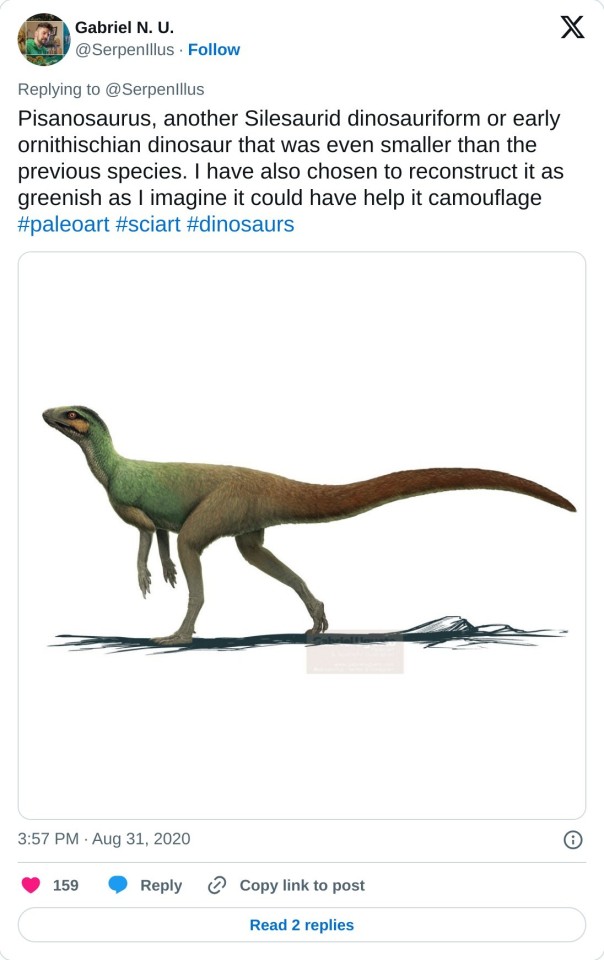
#pleistocene pride#pliestocene pride#mesozoic#triassic#pisanosaurus#dinosaur#dinosaur day#silesaurid#ischigualasto formation
1 note
·
View note
Text

Artwork by @drawingwithdinosaurs
100 notes
·
View notes
Text
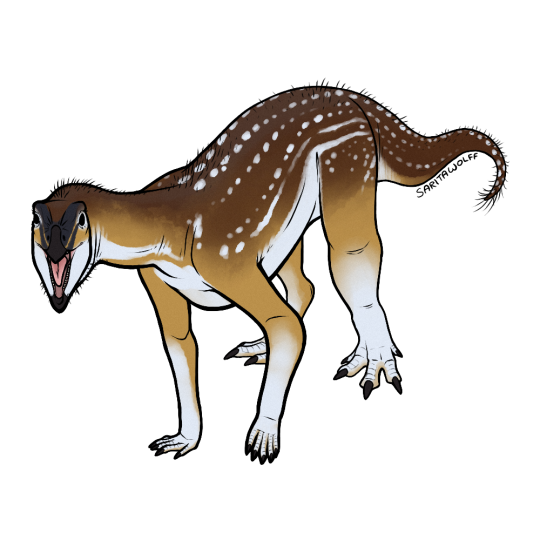
Patreon request for @/rome.and.stuff (Instagram) - Asilisaurus kongwe
Asilisaurus kongwe means “Ancient Ancestor.” As one of the first silesaurs, Asilisaurus is one of the oldest-known Avemetatarsalians (the clade which includes dinosaurs, silesaurs, and pterosaurs.) Found in the Manda Formation of Tanzania, it lived during the earliest portion of the Late Triassic. It appears to have been very common (or at least very prone to fossilization) as it is known from a relatively large amount of fossils.
Based on the length of its limbs, Asilisaurus was likely quadrupedal, but probably could have also reared up on its hind legs. It had no teeth in the tip of its snout, indicating the presence of a small beak, and also had fewer teeth than other silesaurs. Because of this, it is hypothesized that Asilisaurus was an omnivore or even a herbivore. The peglike shape of its teeth may have also lended to piscivory. As silesaurs seemed to have diets which were just as varied as dinosaurs (the Argentinian Lewisuchus was a specialized carnivore, the North American Kwanasaurus was an obligate herbivore, and the Polish Silesaurus was an insectivore and herbivore), Asilisaurus’ diet can’t be based on phylogenetic bracketing.
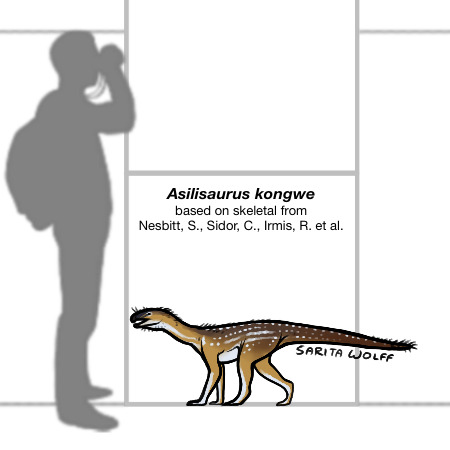
There seem to be two different adult morphologies of Asilisaurus: a “slender” form and a “robust” form. While traditionally regarded as a sign of sexual dimorphism, newer studies show that this could have simply been individual variation and a difference of growth in plentiful vs depleted environments (ie epigenetics), similar to differences seen in Plateosaurus and the modern Alligator.
In the Early Carnian of Tanzania, Asilisaurus kongwe would have lived alongside a variety of pseudosuchians such as Nundasuchus and Mambawakale, as well as the possible early dinosaur, Nyasasaurus. The environment was rich in synapsids as well, including dicynodonts like Angonisaurus, Kannemeyeria, and Tetragonias, and cynodonts like Cynognathus and Diademodon. Asilisaurus would have been preyed on by the aphanosaur Teleocrater and possibly some of the larger, carnivorous cynodonts, which is why I have given it spots for camouflage!
#Asilisaurus kongwe#Asilisaurus#silesaurs#silesaurids#archosaurs#archosauromorphs#reptiles#Manda Formation#Tanzania#Middle Triassic#Late Triassic
65 notes
·
View notes
Text

#Archovember Day 6 - Lewisuchus admixtus
Lewisuchus admixtus was a silesaurid, a type of Triassic archosaur closely related to dinosaurs. Silesaurids all had the same general body plan: a long neck, long legs, and a mostly quadrupedal stance. However, they seem to have all filled a variety of niches. The white-tailed deer-sized Silesaurus was an insectivore. The collie-sized Kwanasaurus was an herbivore. But the smaller, earlier silesaur Lewisuchus was a carnivore, with teeth unique among silesaurids. In fact, its teeth and other anatomical features are so unique that some consider it to be a basal dinosauriform, coming before the silesaurids and dinosaurs split into two groups. It was also found with a single row of osteoderms down its back, something that other silesaurids don’t seem to have. Either way, it was a tiny, unique predator that paved the way for its strange, long-legged cousins.
Living in Late Triassic Argentina, Lewisuchus could have shared habitat with (and probably been hunted by) yesterday’s species, Herrerasaurus. But in the slightly older Chañares Formation, it was more likely to come across Proterochampsids such as Chanaresuchus, Tropidosuchus, and Gualosuchus, and probably competed with them for food. It would have also lived alongside other early dinosauriforms such as Marasuchus, early pterosauromorphs such as Lagerpeton, and the tiny pseudosuchian Gracilisuchus. Cynodonts were plentiful here, and Lewisuchus could have hunted small ones such as Probainognathus.

#my art#SaritaDrawsPalaeo#Lewisuchus#Lewisuchus admixtus#silesaurs#silesaurids#??#archosaurs#archosauromorphs#reptiles#Archovember#Archovember2023
13 notes
·
View notes
Text
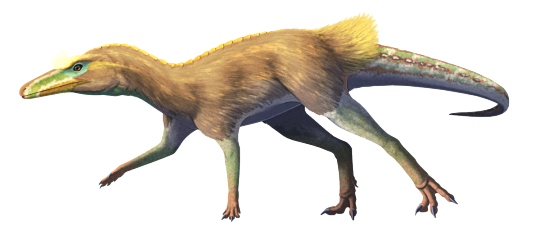
Last week I mentioned the one oddball dinosauriform that had crocodilian-like osteoderm armor, so let's take a look at that one too.
Lewisuchus admixtus lived in what is now northwest Argentina during the late Triassic, around 236-234 million years ago. About 1m long (3'3"), it was an early member of the silesaurids – a group of dinosauriforms that weren't quite dinosaurs themselves, but were very closely related to the earliest true dinosaurs.
(They've also been proposed as instead being early ornithisichians, but we're not getting into that today.)
Much like its later silesaurid relatives Lewisuchus had a long neck and slender limbs, and was probably mainly quadrupedal, possibly with the ability to briefly run bipedally to escape from threats. Its serrated teeth suggest it was carnivorous, likely feeding on both smaller vertebrates and the abundant insects found in the same fossil beds.
Uniquely for an early dinosauriform it also had a single row of bony osteoderms running along its spine. Although it lived at close to the same time as the similarly-armored Mambachiton their last common ancestor was at least 10 million years earlier, and no other early dinosaur precursors with osteoderms are currently known – so this was probably a case of Lewisuchus independently re-evolving the same sort of feature.
—
NixIllustration.com | Tumblr | Patreon
#science illustration#paleontology#paleoart#palaeoblr#lewisuchus#silesauridae#dinosauriformes#avemetatarsalia#archosaur#reptile#art#the early ornithischian idea is intriguing BUT it's also being pushed by the ornithoscelida gang#so that's a thing#(...i should probably also talk about the state of ornithoscelida at some point; it's been what almost seven years?)#(short version: we still dunno and early dinosaur relationships resolve in multiple equally-likely ways; More Data Is Needed)
543 notes
·
View notes
Text
Gondwanax paraisensis Müller, 2024 (new genus and species)

(Type femur [thigh bone] of Gondwanax paraisensis, from Müller, 2024)
Meaning of name: Gondwanax = Gondwana king [in Greek]; paraisensis = from Paraíso do Sul
Age: Middle–Late Triassic (Ladinian–Carnian)
Where found: Santa Maria Formation, Rio Grande do Sul, Brazil
How much is known: A right femur (thigh bone), along with several vertebrae and a partial pelvis from the same site. It is unknown whether the other bones belonged to the same individual as the femur.
Notes: Gondwanax was a silesaurid, a group of probably quadrupedal Triassic reptiles that often had adaptations for herbivory (though there is evidence that they also ate insects). Until recently, silesaurids were generally considered to be close relatives of dinosaurs instead of dinosaurs themselves, and I previously excluded them from coverage on this blog. However, multiple recent analyses have suggested that they might in fact be true dinosaurs, specifically early members of Ornithischia ("bird-hipped" dinosaurs), so from here on out I will tentatively include them within this blog's purview. In fact, some of those studies have found that most "silesaurids" may not have formed a unique evolutionary group, but instead a series of lineages with some being more closely related to later ornithischians than others.
Regardless of whether it is a true dinosaur, Gondwanax is one of the oldest known dinosauromorphs (the group containing dinosaurs and their closest relatives). Compared to other dinosauromorphs of similar age, Gondwanax more closely resembles later dinosaurs in having three hip vertebrae (whereas dinosaurs ancestrally appear to have had only two). It is unusual among dinosauromorphs in having a very small fourth trochanter, a attachment point on the femur for muscles that pull the hindlimb backward.

(Schematic skeletal of Gondwanax paraisensis, with preserved bones in orange, from Müller, 2024)
Reference: Müller, R.T. 2024. A new "silesaurid" from the oldest dinosauromorph-bearing beds of South America provides insights into the early evolution of bird-line archosaurs. Gondwana Research advance online publication. doi: 10.1016/j.gr.2024.09.007
#Palaeoblr#Dinosaurs#Gondwanax#Middle Triassic#Late Triassic#South America#Ornithischia#2024#Extinct
84 notes
·
View notes
Text
Fossil Friday: Lisowicia bojani
I am still geeking out over how far this animal made it during March Madness. Lisowicia bojani lived in Poland during the Late Triassic Period about 210-205 Ma. It was discovered in 2006 by Polish paleontologists Jerzy Dzik, Tomasz Sulej and Grzegorz Niedźwiedzki, who initially thought it was a sauropodomorph. I mean, can you blame them? This thing is HUGE. it wasn't officially named until 2019 though.
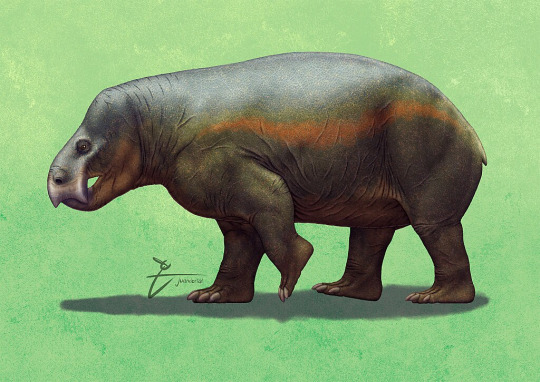
It was found in the Lipie Śląskie clay pit which consists mostly of green mudstones. It's home would have been wet and swampy, akin to the modern day Everglades with large meandering rivers, oxbow lakes and surrounded by abundant vegetation, mostly conifers, ferns, and cycads.
It lived alongside animals such as the archosaurs Smok (who was probably the apex predator),

a silesaurid, a small theropod dinosaur, pterosaurs, a small crocodylomorph, a sphenodont, primitive amphibians, lungfish, coelacanths, hybodontid sharks and a smaller synapsid called Hallautherium.
it belongs in the phylum Chordata (vertebrates) in the clade Amniota in the smaller Synapsida clade (animals with one pair of temporal fenestrae in their skull), continuing into the even smaller Therapsida clade (mammals and their closest relatives).

Within Therapsida, they belong to the suborder anomodontia in the clade dicynodontia.
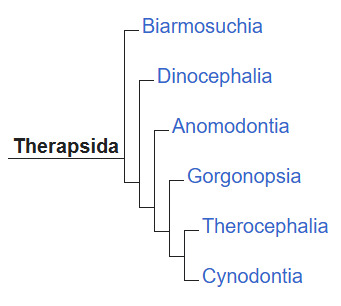

Dicynodonts are a group of tusked, beaked herbivorous synapsids that ranged from the mid-Permian to the Late Triassic. Lisowicia was the largest of this highly successful group.

It had very large temporal fenestrae which allowed for large jaw muscles to attach at the back of the skull. It was a stocky animal like its closest relatives. It was completely toothless and lacked the tusks of other dicynodonts
It's cervical vertebrae have hollows excavated along the lateral sides but lack pleurocoels so their function is currently unknown.
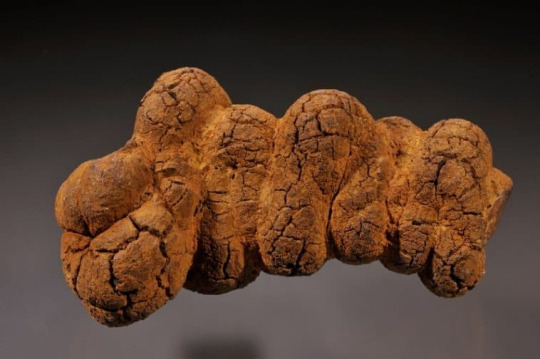
Coprolites attributed to Lisowicia have been found in abundant accumulations that have been interpreted as a sort of communal bathroom. It seems these animals could have been litter box trained! Within these coprolites have been found evidence of soft vegetation and conifers and occasionally woody material.

The bones of Lisowicia lack clear lines of arrested growth (LAGs) which might suggest that they grew very rapidly without interruptions until they reached adult size. LAGs may have either been absent or erased due to extensive remodeling of bone into adulthood which is similar to mammals and some dinosaurs. This would support permanently rapid growth.
Hope you enjoyed this week's lessons and I hope you tune in Monday to learn about another popular metal. Fossilize you later!
#paleontology#fossils#fun facts#science education#science#science side of tumblr#synapsid#dicynodont#march madness
16 notes
·
View notes
Text
New Species of Dinosaur Relative Discovered in Brazil
A new genus and species of silesaurid being named Gondwanax paraisensis has been identified from the fossilized remains discovered in Southern Brazil.

Silesauridae are an extinct group of Triassic reptiles related to dinosaurs.
These creatures had a fairly long neck and legs, and possibly quadrupedal habits.
They are most commonly considered to be a group of non-dinosaur dinosauriforms, and the sister group of dinosaurs.
They occupied a variety of ecological niches, with early silesaurids being meat-eating and later species having adaptations for specialized herbivory.
“Most authors agree that silesaurids are the sister-group to Dinosauria, forming the clade Silesauridae,” said Dr. Rodrigo Temp Müller, a paleontologist at the Universidade Federal de Santa Maria.
Continue reading.
15 notes
·
View notes
Text
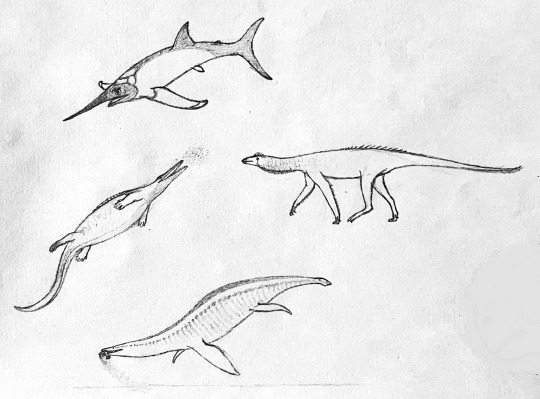
Slightly more chaotic collection of Flocking-together Paleostream sketches this time. Starting on the left is Hupehsuchus, going after a shoal of tiny Conodonts. On the bottom is a Bobosaurus, snatching a Pseudoglyphaea lobster from the seafloor. On the right is a Eocoelophysis (not closely related to the dinosaur Coelophysis, but instead a fragmentary Silesaurid) strutting along, and on the top is the remarkably billfish-like placoderm Carolowilhemina.
69 notes
·
View notes
Text
youtube
Welcome to the Juras-Sick Park-Cast podcast, the Jurassic Park podcast about Michael Crichton's 1990 novel Jurassic Park, and also not about that, too.
0:00 - Introduction
Find the episode webpage at: Episode 39 - Lex. www.jurassickparkcast.blogspot.com/2022/11/episode-39-lex.html
09:30 - Interview with terrific guest "Tom Jurassic" Fishenden.
29:00 - Details on his Youtube audiodrama, "Tales from a Jurassic World."
In this episode, my terrific guest Tom Fishenden joins the show to chat with me about: British dinosaurs, the Maidstone Iguanodon, Baryonyx, the Isle of Wight, Jurassic Park, Primeval, the Jurassic Park Podcast, fandom, audio dramas, the Dino Watch Podcast, World War Z, Battle of Big Rock, hypothetical dinosaur behaviours, the Lysine Contingency, the Lysine Contingency, engaging in fandom, Lex Murphy, Lewis Dodgson, the future of the Jurassic Park as an intellectual property, dinosaur designs, #StaySafeStayJurassic, more sense, and much more!
Plus dinosaur news about:
02:25 - Ecologically distinct dinosaurian sister group shows early diversification of Ornithodira (silesaurids!)
06:27 - Binocular Vision in Theropod Dinosaurs
00:34 - Featuring the music of Snale https://snalerock.bandcamp.com/releases Intro: Latebloomer. Outro: Grow Old Or Don't.
The Text: This week’s text is Lex, spanning from pages 210 – 217.
55:55 - Synopsis of the chapter Lex in Jurassic Park Synopsis: Tim finds Lex hiding in a culvert under the road, and they climb out to find Dr. Grant. Meanwhile, Ed Regis climbs out from the bounders in which he’d been hiding, feeling great shame for having abandoned the kids during the tyrannosaur attack. As Regis emerges, he’s tackled and eaten by the juvenile tyrannosaurus, which pushes Grant and the kids to escape further into the park, rather than following the road back to “safety.”
01:03:09 - Analyzing the literary and stylistic techniques in the chapter Tim
01:12:11 - Discussions surround Show Don't Tell, Daddy issues, What's in a name, Timeline, and Believe me, I know!
Corrections:
Side effects: May cause you to login to Zoom twice, creating a ghost account, which can only be spoken to via a Ouigji board.
Find it on iTunes, on Spotify (click here!) or on Podbean (click here). Thank you! The Jura-Sick Park-cast is a part of the Spring Chickens banner of amateur intellectual properties including the Spring Chickens funny pages, Tomb of the Undead graphic novel, the Second Lapse graphic novelettes, The Infantry, and the worst of it all, the King St. Capers.
You can find links to all that baggage in the show notes, or by visiting the schickens.blogpost.com or finding us on Facebook, at Facebook.com/SpringChickenCapers or me, I’m on twitter at @RogersRyan22 or email me at ryansrogers-at-gmail.com.
Thank you, dearly, for tuning in to the Juras-Sick Park-Cast, the Jurassic Park podcast where we talk about the novel Jurassic Park, and also not that, too. Until next time! #JurassicPark #MichaelCrichton
#dinosaurs#youtube#jurassic park#michael crichton#dinosaur movies#dinosaur#podcast#tyrannosaurus vision#tyrannosaurus#Tales from a Jurassic World#guest interview#booktube#book tube#Lex Murphy#Ed Regis#Regis getting eaten#Youtube
2 notes
·
View notes
Text


at the very least the rabbithole ive gone down trying to make this race work in my brain has led to me learning that silesaurids exist these guys are awesome
worldbuilding is truly a hell of your own making bcus i am struggling so much making this one reptilian race bcus i refuse to do the ��crocodile/lizard mishmash with upright posture” that u see all the time
1 note
·
View note
Photo

Too Much Green for a Silesian Reptile_A Silesaurus Portrait.
Digital, 2020.
77 notes
·
View notes
Text
basically I'm too bad at math (or too unwilling to try to figure it out exactly) but at small numbers I try to just represent the three major groups of dinosaurs (ornithischians, sauropodomorphs, theropods) as accurately as I can, which often means using a bird for theropods as there are thousands of bird species and not nearly as many nonavian theropods, until I can afford to have a nonavian theropod, and from there I just divide until all major forms of dinosaurs are represented at least once, and from there I represent proportionally to the number of dinosaur genera/species there are per group, which means as the number of dinosaur species to be represented goes up, the number of birds goes up, because there are SO many more birds than nonavian dinosaurs (unless we're just doing fossils, which, makes it proportional to time, roughly, so that's fine. Way less lopsided.) So if you ask for a ridiculously high number, it's just a bunch of birds and most nonavian dinosaurs we know. At 10,000, you're just asking for the Dinosauromorpha Masterlist created by myself and maintained by my friend and colleague @albertonykus who runs @new-dinosaurs as well, so I provide it here but be warned that it's by genus and most living dinosaurs have plenty of species per genus so the number of species of dinosaur is somewhere between 10k and 20k so that's why I draw a hard line around there:
#sorry for the rambly text#dinosaurs#The Dinosaur Representation Algorithm#if you're here to ask about things that don't neatly fit into one of those clades: I know#I shoehorn them in as soon as it's feasible based on the number#which is usually over 25 somewhere#silesaurids wait until way later (like closer to 72 or 100 or something) bc they keep jumping around#birds#I love that birds are dinosaurs but this is what it's done for representing dinosaurs#caused complete chaos#I suppose that's fitting?
35 notes
·
View notes
Text

Oc-tober day 30: Fantasy concept: Hunter.
Here's another fantasy character I've been developing. She's a big game hunter who catches peculiar (and big) specimens for clients.
Her steed may look a bit weird, but it is a Silesaurid, so it's a given, basically.
4 notes
·
View notes
Text

#Archovember Day 20 - Prestosuchus chiniquensis
The Triassic was truly when Pseudosuchians ruled the earth. They came in a variety of different shapes and sizes and filled almost every niche. During this period, nearly every apex predator was a pseudosuchian. In the Middle Triassic of Brazil, this niche was filled by Prestosuchus chiniquensis. Originally estimated at around 5 meters long, a Prestosuchus specimen found in 2010 now places their upper size limits at nearly 7 meters (23 feet) long, making them one of the largest Triassic pseudosuchians, only surpassed by Saurosuchus. Like the crocodilians who would come later Prestosuchus walked on four legs, but in a more dinosaurian upright stance. Large Prestosuchians are assumed to be ambush predators, and this is supported by the finding of one Prestosuchus specimen in a fossil deposit assumed to be a local watering hole, a location ambush predators would have frequently haunted. This particular specimen had such a well-preserved hind leg that paleontologists were able to study its precise muscle groupings and confirm that Prestosuchus would have only been able to walk quadrupedally, unlike the related bipedal Poposaurus.

Prestosuchus chiniquensis could have preyed on most anything in Middle Triassic Brazil. Dicynodonts like Dinodontosaurus and Stahleckeria would have been their largest prey items. It could have hunted smaller pseudosuchians like Decuriasuchus, Pagosvenator, and Procerosuchus. Other archosauromorphs would have included silesaurids like Gamatavus, aphanosaurs like Spondylosoma, and rhyncosaurs like Brasinorhynchus. Cynodonts like the carnivorous Chiniquodon and the herbivorous Exaeretodon would have also been on the menu.
#my art#SaritaDrawsPalaeo#Prestosuchus chiniquensis#Prestosuchus#prestosuchid#pseudosuchians#archosaurs#archosauromorphs#reptiles#Archovember#archovember2023
17 notes
·
View notes
Photo

Silesaurus by FunkMonk, in the public domain. Retrieved from Wikipedia.
#silesaurus#silesaurid#palaeoblr#dinosauromorph#dinosaur#carnian#late triassic#triassic#mesozoic#europe#extinct#reconstruction
15 notes
·
View notes